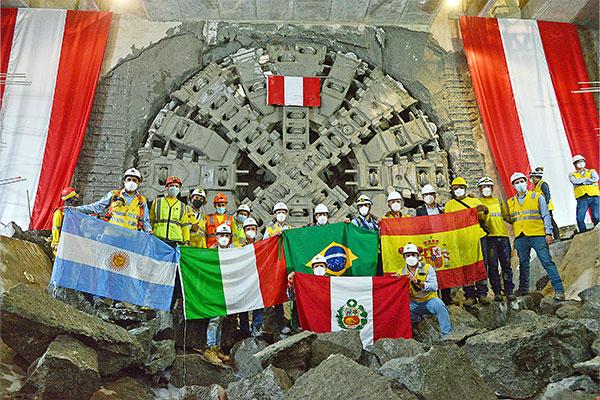FCC Construcción completes excavation of the eleventh station on Line 2 and 4 of the Lima Metro (Peru)
FCC Construcción completes excavation of the eleventh station on Line 2 and 4 of the Lima Metro (Peru)

FCC Construcción has finished the excavation, using the Delia tunnel boring machine, that connects the Plaza Bolognesi station with the Parque Murillo station, which is the eleventh station of the 27 stations included in Line 2 of the Lima Metro. This station is the first underground station in the country and is located at a depth of more than 25 metres.
The second line of the Lima Metro will be more than 26 kilometres long and will link the east of Lima with the west, with a branch to the new Jorge Chávez international airport and another station at the port of Callao. In the test phase, more than 12 million people have used the first five stations in the district of Ate, in the east of Lima.
The tunnel boring machine will soon be excavating the Tingo María, La Alborada, Elio, San Marcos, Oscar R. Benavides, Carmen de la Legua and Insurgentes stations in Callao.
Line 2 will carry 660,000 passengers per day, with a projection to reach 1,200,000 users by 2030. Line 2 of the Lima and Callao Metro has generated more than 5,000 direct jobs and 9,000 indirect jobs.
Line 2 and 4 of Metro Lima
The project consists of the construction of 35 underground metro stations linked by 35 kilometres of tunnels. Line 2 will be almost 27 kilometres long and will cover the east-west axis of Lima from Ate to Callao.
The line 4 branch , which will connect the Peruvian capital with the airport, will run along eight kilometres of tunnel from Faucett to Néstor Gambetta avenues. Eight stations will be built along this route.
In addition, the contract includes the construction of the superstructure, the supply of rolling stock, the implementation of the electromechanical equipment, the railway systems and the power supply necessary for the operation of the metro.
The choice of an underground transport system will have less impact on the life of the city, as well as a real urban transformation, since many of the surface areas through which the new metro will run will be converted into green zones.








